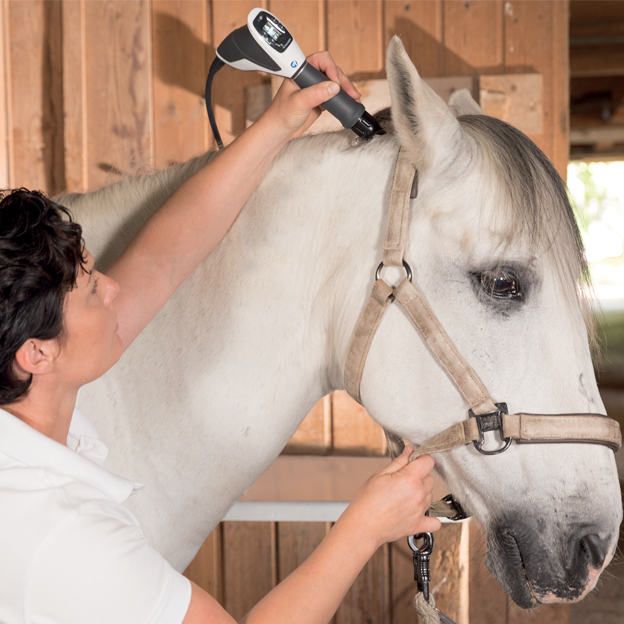Equine Therapy for Injury Recovery: Exactly How Steeds Help Heal Emotional Wounds
Wiki Article
Reviewing the Efficiency of Laser Treatment in Equine Therapy for Injury Rehabilitation
The examination of laser treatment's performance in equine injury rehab hinges on numerous aspects, including recovery time, discomfort reduction, and cells regeneration. Scientific researches recommend significant enhancements in conditions like tendonitis and osteo arthritis, credited to enhanced cellular feature and elevated ATP manufacturing. Vets frequently observe superior results with laser therapy compared to conventional approaches, positioning it as a critical aspect in equine treatment. Nonetheless, the necessity for continuous tracking and tailored therapy plans can not be overstated. What specific clinical proof supports these claims, and exactly how do veterinarians apply these protocols in practice?Comprehending Laser Therapy
Laser therapy has become an essential device in vet medication, specifically in the treatment of equine conditions. Known for its non-invasive nature and efficacy, laser treatment includes the application of details wavelengths of light to stimulate tissue fixing and decrease swelling. This healing method is significantly preferred for its capacity to increase the recovery procedure in equines dealing with a range of bone and joint injuries and chronic conditions.The main device behind laser therapy is its capability to boost mobile features. When laser light passes through the skin, it is taken in by mitochondria, the powerhouse of cells, which leads to raised manufacturing of adenosine triphosphate (ATP) This biochemical energy increase assists in cellular repair and regeneration. Additionally, laser treatment promotes vasodilation, enhancing blood flow and oxygen distribution to damaged tissues, hence speeding up healing.
In equine medication, laser treatment is particularly advantageous for conditions such as tendonitis, osteoarthritis, and wound healing. The method is admired for its pain-relieving residential or commercial properties, enabling steeds to restore flexibility and function extra rapidly. Veterinarians additionally appreciate its very little adverse effects compared to other therapy modalities, making it a reputable and safe option for equine care.

How Laser Treatment Functions

Upon absorption, these photons activate a series of biochemical adjustments, improving mitochondrial feature and leading to increased adenosine triphosphate (ATP) manufacturing. This increase in ATP speeds up cellular metabolism, promoting cells repair work and regrowth. In addition, laser therapy modulates inflammatory reactions by affecting cytokine levels and minimizing oxidative stress, thereby relieving discomfort and swelling.
An additional substantial element of laser treatment is its role in improving microcirculation. The therapy promotes vasodilation, enhancing blood flow and oxygen delivery to broken cells (Equine Therapy). This assists in the removal of cellular particles and supports the expansion of fibroblasts and collagen synthesis, critical for wound recovery
Scientific Proof
The effectiveness of laser treatment in equine therapy has been corroborated with different scientific research studies, showcasing its official website restorative prospective throughout a variety of conditions. Numerous regulated trials and observational research studies have actually recorded considerable enhancements in cells repair work, pain decrease, and overall rehab timelines. A research carried out by Turner et al. (2012) showed that steeds treated with low-level laser therapy (LLLT) for tendon injuries exhibited sped up healing compared to those getting conventional therapies. The research study highlighted a significant decrease in inflammation and improved collagen development.Similarly, research study by Johnson and coworkers (2015) focused on equine muscle injuries, revealing that laser treatment dramatically accelerated muscle fiber regrowth and decreased muscular tissue tightness. These searchings for were affirmed by histological evaluations revealing better muscle tissue company. Clinical assessments have actually shown that laser therapy can ease chronic problems such as osteoarthritis. A research by Smith et al. (2018) reported that horses with osteoarthritic joints experienced noteworthy discomfort alleviation and boosted range of motion adhering to a routine of laser therapy sessions.
Vet Insights

Vets also appreciate the convenience of laser therapy. She points out that laser treatment can be customized to the details needs of each horse, making sure optimum outcomes.
Furthermore, vets value the capability to incorporate laser treatment with check various other treatment modalities. This multimodal method can enhance general therapy efficacy, giving a comprehensive go to this site service for equine rehabilitation. Such endorsements from skilled professionals underscore the growing acceptance and application of laser therapy in equine medicine.
Practical Considerations
A vital facet of carrying out laser treatment in equine therapy involves comprehending the practical considerations that ensure its efficacy and safety and security. Primarily, it is important to pick the ideal laser tool, as numerous kinds differ in wavelength, power, and penetration depth. Equine Therapy. Veterinarians must be fluent in these specifications to tailor treatment procedures effectively to every injury kindFurthermore, the regularity and duration of laser treatment sessions need cautious preparation to maximize restorative advantages while reducing any kind of prospective damaging effects. Constant monitoring of the equine's feedback to treatment can assist necessary modifications in the treatment regimen. Establishing a secure and regulated environment throughout therapies is likewise essential to avoid unintended exposure to laser emissions, which might damage both the steed and the handler.
Educating and certification of workers carrying out laser treatment are paramount to make certain correct technique and to support security criteria. In addition, maintaining precise records of each session, consisting of laser setups and observed outcomes, is crucial for reviewing the total effectiveness of the treatment and for making data-driven choices.
Conclusion
Laser treatment has actually emerged as an efficient modality in equine injury rehab, offering considerable advantages in recovery time, discomfort alleviation, and tissue recovery. For optimum outcomes, constant tracking and customized therapy methods stay essential in leveraging the full potential of laser therapy in equine treatment.Report this wiki page